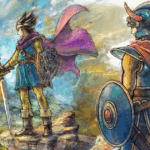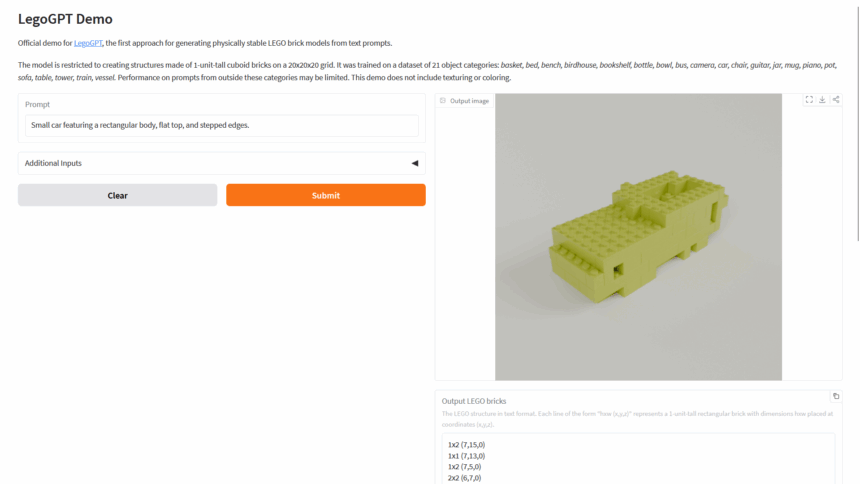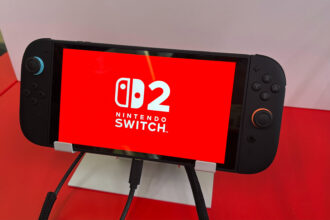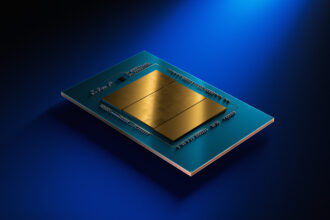### Introducing LegoGPT: Transforming Imagination into Lego Reality
Imagine standing before a pile of colorful Lego bricks, yearning to bring a unique creation to life but feeling stumped on how to start. Enter **LegoGPT**, a groundbreaking AI tool designed to turn your textual ideas into actual, buildable Lego sets. Simply type in a prompt, and watch as LegoGPT generates detailed, step-by-step instructions, complete with the specific pieces you’ll need to execute your vision.
### Precision in Creation
What sets LegoGPT apart from conventional AI models? Its commitment to practicality. While many image-generating AIs produce fantastical designs that defy the laws of physics, LegoGPT is different. It uses advanced physics simulations to assess each proposed design, ensuring structural integrity. The result? Designs that not only look good on paper but are also feasible to build. Think of it as a savvy partner that intelligently selects the ideal bricks to elevate your digital Lego experience.
### Accessible to All
With LegoGPT, the door to impressive Lego creations swings wide open, requiring only your creative spirit and a desire to tinker—not a degree in engineering or years of expertise. Reminiscent of the sophisticated Lego-building robots seen in demonstrations by the Carnegie Mellon team, this tool invites enthusiasts to unleash their imaginative potential.
### The Heart of LegoGPT: StableText2Lego
At the core of LegoGPT lies a rich dataset known as **StableText2Lego**. This repository contains over 47,000 stable Lego designs, complemented by descriptive captions. Instead of manually by hand, researchers utilized OpenAI’s GPT-4o to analyze images of Lego constructions from various perspectives, simplifying the process of generating accurate, descriptive text.
### Open-source and Evolving
All relevant materials—including code, data, and demonstrations—are available on the official website as well as GitHub. However, it’s essential to note that LegoGPT currently operates within certain limitations. Supporting only eight standard rectangular brick types and a workspace of 20 by 20 bricks, this platform is designed for straightforward designs rather than elaborate creations like sprawling castles or intricate machines. Think more along the lines of nostalgic 1970s Lego vibes instead of the complexity of a majestic 4,000-piece Millennium Falcon.
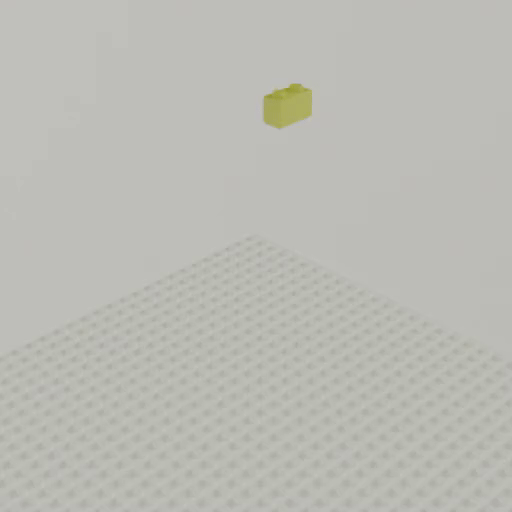
*Image credit: LegoGPT*
### Broadening Horizons
The potential applications for this AI-driven technology extend far beyond mere entertainment. LegoGPT doesn’t just stop at toy design; it could significantly impact industries like prototyping and architectural modeling. While it simplifies the design process, it encourages creativity without necessitating advanced math skills or technical know-how. This is both an exciting development and a remarkable step toward democratizing design, inviting a larger audience to engage with creation.
### Emphasizing Structure Over Aesthetics
Currently, LegoGPT tends to prioritize structural soundness over aesthetics. However, researchers have provided an optional feature that allows for some customization in color schemes. For instance, have you ever dreamed of constructing a metallic purple electric guitar? Thanks to this flexible feature, your creative aspiration could come to fruition.
### A New Era in Lego Building
Though limitations exist regarding the size and complexity of designs, LegoGPT represents a significant stride in the realm of accessible creativity. It empowers Lego fans and budding designers alike, creating a platform where imagination meets functional design in captivating ways. So gather your bricks, dream big, and let LegoGPT help you manifest your Lego visions.
Sign up for breaking news, reviews, opinions, top tech deals, and more!






